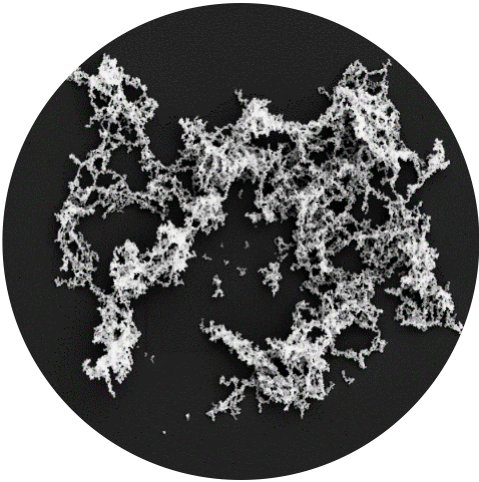Unveiling structure
Next generation particle analysis
Process monitoring - Online product clearance - Research & development
Fast structure determination via simultaneous measurement of mass and size.
Discover femtoG Contact usDo you wish to ...
- speed up your product clearance?
- control particle structure online during production?
- measure agglomerate stability?
- obtain product characteristic tailored to your needs?
Why femtoG?
Extensive
Multidimensional datasetFast
Only minutes for one scanRobust
Millions of particles analyzed per scanAdjustable
Variable scan range and resolutionMeet us at these upcoming events:
2024 February 20-21
2024 February 27-28
2024 April 9-12
2024 April 30 - May 2
2024 June 4-5
2024 June 5-6
2023 October 15-18
2023 November 7-8
2023 October 5-6
2023 September 26-28
2023 September 26-28
2023 June 22-23
2023 June 20-21
2023 June 19-22
2023 June 14-15
2023 March 29-31
2023 March 14-15
Introducing femtoG fingerprint
femtoG provides a novel and fast method to measure the structural properties of nanoparticles.
Adopting aerosol-based measurement concepts, we measure simultaneously the mass and diameter of individual particles.
A femtoG scan throughout the entire particle mass and size distribution opens unique insight into a material's structure.

How heavy is a nanoparticle? Why does it matter?
The term nanoparticle is derived from a length-scale 10-9 m, but a 1-dimensional metric can rarely describe complex structured particles to their full extent. Different equivalent diameters, or min/max dimensions are used rendering the comparison of particle size distribution challenging.However, there is only one mass to describe a particle. The mass is an intrinsic, fundamental and unambiguous property, which makes it an ideal metric for particle size distribution.
Exemplary particles masses of common materials:
Fumed silica: 1-10 fg
Tire-grade Carbon Blacks: 1-6 fg
Recovered Carbon blacks: 6-12 fg
Titanium dioxide pigments: 100 fg
femtoG uses the electrical mobility analysis to measure the geometric dimensions of a particle. Unlike other diameter estimates the mobility diameter it is not affect by the material density and refractive index.
Combining the particle mass and diameter distributions gives unique insight into the structure of the material.
To evaluate a sample we determine the change in the density and mass in the interquartile range - the femtoG fingerprint. The femtoG fingerprint gives an intuitive overview of the mass distribution, the density (≈ porosity-1) and fractality of the material.
Changes in the fingerprint allow for resolving the impact of a process on the particle structure. Further products, such as, the number of particles per gram or the size of a mono-particle layer help to translate changes on the nano-scale to the real world application.
To evaluate a sample we determine the change in the density and mass in the interquartile range - the femtoG fingerprint. The femtoG fingerprint gives an intuitive overview of the mass distribution, the density (≈ porosity-1) and fractality of the material.
Changes in the fingerprint allow for resolving the impact of a process on the particle structure. Further products, such as, the number of particles per gram or the size of a mono-particle layer help to translate changes on the nano-scale to the real world application.
Services
Lab analysis
Offline analysis of an individual sample (ideally > 25g needed, as powder or beaded) in our labs. Individual sample report featuring mass, density, and size distribution details (optionally: data interpretation upon delivery).➜ See sample requirements
➜ See example report
Process monitoring
Continuous online monitoring of the production process at a time resolution of < 15 minutes. This methodology is currently under development, femtoG welcomes industry partners for the planning of on site pilots.➜ Become a pilot partner









